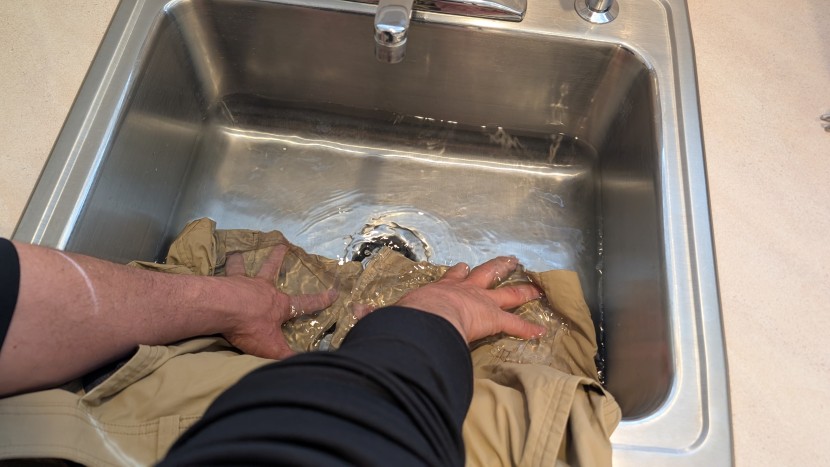We hit the trail in a wide variety of climates and elevations and pushed each pair of shorts to their limits. Our lineup was worn on casual trail walks, day hikes, and while backpacking — racking up hundreds of miles worth in wear.
Comfort and Mobility
To assess comfort and mobility, we rely heavily on hands-on testing. We took each pair out on the trail and wore them in a variety of other related activities like hiking, backpacking, and running. Space in the crotch, thighs, and waist are key components of comfort, while the amount and direction of fabric stretch is a primary consideration for mobility.
During our tests, we high-stepped it up bleachers, squatted, bent, twisted, and sat to get a good idea of how each pair accommodated large and small movements. We also simply wore every pair every day for every activity we could fit into each day.
Fabric Performance
In addition to assessing each pair's overall feel, we count the number and type of pockets and pocket closures, the type and effectiveness of the waist fastening system, fly, zippers, gusseting, and anything else that adds a little extra something to each model. One of the key in-home studies for this metric is our drying tests. For this, we sink the bottom half of each model into four inches of water for three minutes. We also use a stopwatch to time how long each pair takes to become completely saturated. We then use a hair dryer to time each pair's drying time (air-only setting, no heat).
Versatility and Style
Versatility is a combination of functionality and aesthetics. We took each pair on a variety of different adventures and terrains to see which ones handled the full spectrum the best. Shorts that could realistically be used for a broad range of activities outside of hiking received the highest scores. We also took into account how each model looks — and whether we could get away with wearing them in social situations outside of the outdoors.
Construction Quality
How things are made is a serious consideration, especially when it comes to outdoor gear. Stuff that is meant to be taken into the backcountry should be rugged enough to do battle with Mother Nature on a variety of fronts. We pushed each model's fabric to its limits for the metric, both on the trail and at home. We counted stitches per inch and subjected each pair to a variety of scratch tests to see how well they would hold up against attacks from rock outcroppings, barbed-wire fences, rogue tree branches, and the like. Shorts with reinforcements like double- or triple-stitched seams, metal rivets and buttons, and stitch counts with 12 or more stitches per inch received the highest scores.



